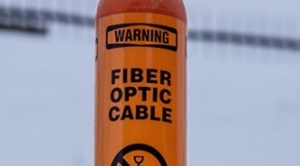May 2024 Vol. 79 No. 5
Editor's Log
Editor’s log: Waiting on the storms
By Robert Carpenter, Editor-in-Chief
(UI) — By the end of 2024, somewhere between $80 and $100 billion will have been dished out to cities, power utilities, fiber companies and miscellaneous entities to solve a fraction of America’s underground infrastructure needs.
Some may be surprised by my use of the word “fraction” to describe the generous billions Congress has doled out and will continue to do so through 2026 via the famous Infrastructure Act. But when we examine all the justifiable and necessary updates, replacement, health concerns, et. al. necessary to return the country’s piping and conduit infrastructure to high performance standards, hundreds of billions more will ultimately have to be invested over the next 20 years.
Still, this influx of spending is much needed and appreciated by those receiving the funding. But as my fickle mind has been following all the rush of severe thunder storms and tornadic activity in May, I couldn’t help but wonder if and how underground infrastructure improvements may be avoiding flooding, power failure and loss of services?
After all, much of the money being invested was the direct result of climate catastrophes that compromise utilities and bring hardships to citizens. Just how well did the infrastructure ride out the tornadic storms and heavy rains? Admittedly, that will be an extremely hard metric to figure out. But in future years, as storm surges hit the coasts, rivers rise and heavy rains pour down in inland areas, we’ll begin to paint at least a spotty picture of how drainage systems have reacted, and if stormwater mitigation techniques truly have been effective?
Another metric to be weighed will be how effective electric utilities have been in hardening their distribution and transmission lines. The Infrastructure Bill is providing billions for this as the direct result of impacts and outages – sometimes for months – on the electric grid. That includes Mother Nature’s heavy winter blizzards or ice storms, not to overlook massive tropical systems or powerful hurricanes. Or worse yet, just like has recently happened, scores of tornados that make splinters out of utility poles.
The painful truth that utilities hate to admit is that the only way to truly harden their systems is to move them underground. That has never been a popular concept among power and telecom utilities. Back in the early ‘90s as technology provided solutions for under-grounding utilities, it was deemed far too costly to transfer above-ground infrastructure underground, a mindset that has largely carried forward for two decades.
It was simply easier to set tall poles and send workers and equipment up said poles with heavy and cumbersome equipment. It was never safer, just cheaper. Electric utilities always assumed the ease of access to overhead lines would be the cheapest way to maintain them, regardless of life cycle costs. Plus, going underground with power lines into the great unknown was a scary thought.
Over the last several years, those antiquated perceptions have begun to change. The fear of going underground has dissipated. Lifecycle costs of constant maintenance to overhead lines pile up – especially in stormy weather. Peace of mind for communities is knowing that the underground plant is being preserved and service interruptions are much fewer and of shorter duration.
Further, costs for going underground have dropped sharply while avoidance of obstacles and other utilities has been perfected. Several things have made that possible. Equipment and technology, such as horizontal directional drilling, piercing tools, vibratory plows, micro trenching, vacuum excavation, utility locating and other technologies, have combined to make the art of underground installation smooth, efficient and safe.
But perhaps the best reason to go underground is for extreme lifecycle results. The impacts of lightning strikes, tornados and hurricanes have been tremendously diminished.
Installing electric distribution cable underground is no more costly or challenging than fiber. However, power transmission lines can still be more costly due to heat that needs to be shed from large cables. Innovative technologies such as thermal grout or cooling conduits absorb or release heat build-up.
Also, the success, effectiveness and economics of directional drilling has made tremendous strides, allowing conduit to be installed through the optimal thermal zones. Under the right circumstances, there is no longer any doubt that going underground with transmission lines is the future.
What took many decades of decay, due to neglect, will demand more than a one-time financial shot in the arm resolve. The question is are we as a nation going to continue the investment to return our infrastructure to modern standards or continue our spiral into third-world status?





Comments